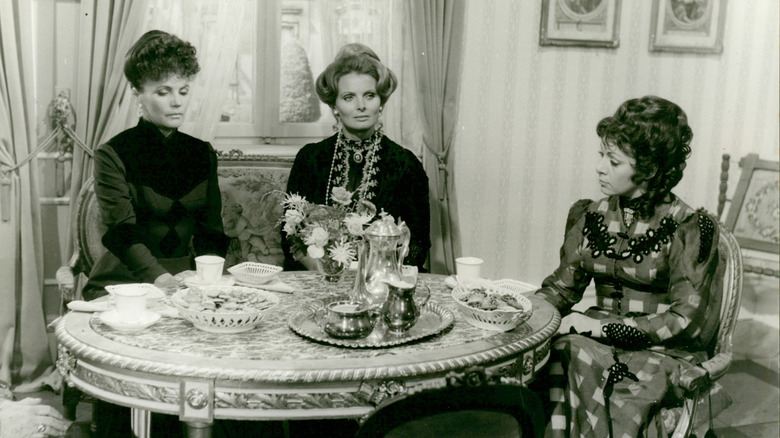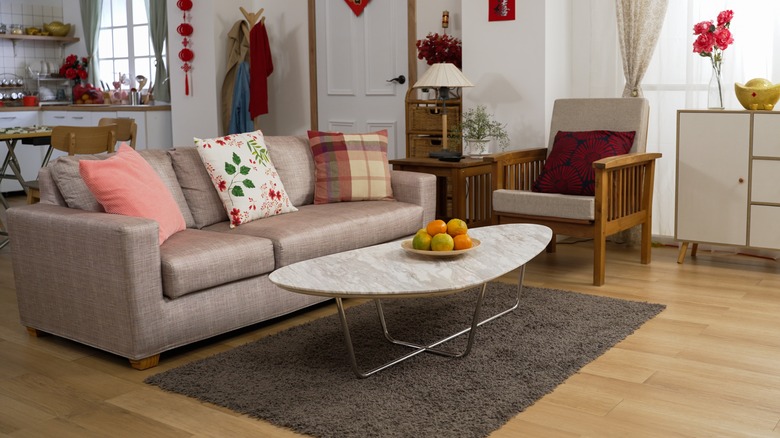Do Coffee Tables Have Anything To Do With Coffee?
While a coffee table may be the center of your living room — home to television remotes, plants, decorative trays, and even large hardcover books — it may not be the place you sip your morning cup of joe. In fact, you may find it easier to sip your coffee at the kitchen table, or from a traveler mug in the car. So why does the term coffee table have the word "coffee" in it?
It actually started with another beverage: tea. Let's go back in time to the 17th century, when tea tables began to appear in homes across Europe. According to Laurel Crown, tea tables were tall, round tables that accommodated seated or standing guests for afternoon and high tea. By the 18th century, the table went from a stationary fixture to a tea caddy on wheels, where hosts could transport it around the room for serving.
With tea being one of the earliest drinks to date (per isequalto), it only made sense to have a table dedicated to it. In fact, coffee didn't come around until about 3,000 years after tea was discovered, but once the first coffeehouse opened, popularity for the hot caffeinated beverage spread like wildfire.
Yes, but it all started with tea
According to The Examiner News, the first coffeehouse opened in London in 1652, with more spreading throughout Europe soon after. In those coffeehouses, tea tables were present with an updated appearance from their earlier versions. These tables sat 27 inches in height, were stationary with no wheels, and required seated guests. The idea of the tea table stemmed from needing to place a hot cup down between sips. The burning question is why aren't coffee tables as high as tea tables? It's not exactly convenient to dig yourself out of a comfy couch and hunch over a low table, just to grab a sip.
Architectural Digest states that in the 19th century, coffee took the place of tea as America's favorite beverage, with employers promoting coffee breaks in the workplace. The hot drink eventually became more accessible, as people started learning how to brew coffee at home, and furniture manufacturers decided to give the beverage its own table with a much more relaxed, comfortable feel. This meant lower in height, specifically 18 to 19 inches tall. It's unknown who coined the phrase "coffee table," but what was the purpose of making it lower to the ground?
Why are coffee tables lower in height?
One theory as to why the coffee table is shorter is that it invites more social interaction, allowing you to see across the table to talk to people (via The Examiner News). Laurel Crown has another theory, stating that the Anglo-Japanese style of furniture was incredibly popular during the 1870s and 1880s, and lower tables were very common in Japan.
While we may not use this necessary piece for coffee much in today's time, it's so common that without one some rooms feel bare. In fact, from an interior design standpoint, Architectural Digest states that the coffee table's low height makes it a less dramatic piece that can enhance a small space.
The founder and creative director of Address Home, Rajat Singhi, shares with Architectural Digest that a coffee table should be the same height, if not one to two inches lower, than your couch cushions, and two-thirds the length of your couch.


